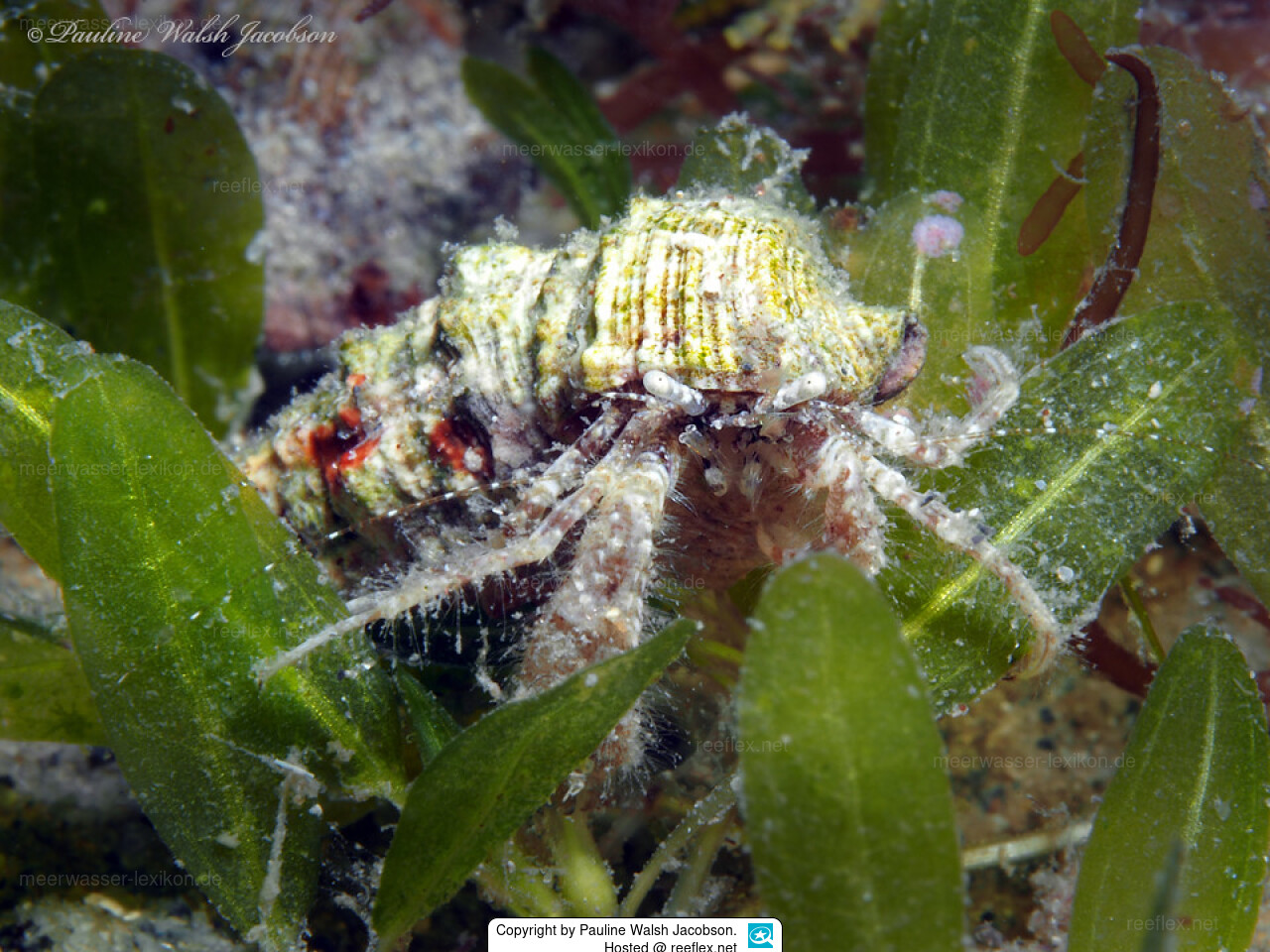Info
Pagurus maclaughlinae García-Gómez, 1982
The holotype: from Florida.
Pagurus maclaughlinae is a common member of the seagrass macrobenthos in Florida waters. As a grazer on seagrass blades, the hermit may play an important role in seagrass ecology by reducing epiphyte cover on the blades. At a site north of Link Port in the Indian River Lagoon, Florida, Pagurus maclaughlinae was more common in Thalassia patches than in those of Syringodium or Halodule. Seagrass with epiphytes is clearly preferred over unvegetated substrates.
Egg-bearing females can be found in autumn and spring. Females reach sexual maturity at a carapace length of 1.25–1.50 mm.
Cerithium muscarum, Modulus modulus and Nassarius vibex accounted for -94% of the 13 snail shell species used. Which shells are used differs between the sexes, oviger and non-oviger females, as well as between the size of the hermits.
The holotype: from Florida.
Pagurus maclaughlinae is a common member of the seagrass macrobenthos in Florida waters. As a grazer on seagrass blades, the hermit may play an important role in seagrass ecology by reducing epiphyte cover on the blades. At a site north of Link Port in the Indian River Lagoon, Florida, Pagurus maclaughlinae was more common in Thalassia patches than in those of Syringodium or Halodule. Seagrass with epiphytes is clearly preferred over unvegetated substrates.
Egg-bearing females can be found in autumn and spring. Females reach sexual maturity at a carapace length of 1.25–1.50 mm.
Cerithium muscarum, Modulus modulus and Nassarius vibex accounted for -94% of the 13 snail shell species used. Which shells are used differs between the sexes, oviger and non-oviger females, as well as between the size of the hermits.







 Pauline Walsh Jacobson, USA
Pauline Walsh Jacobson, USA




































